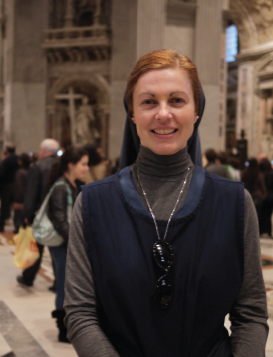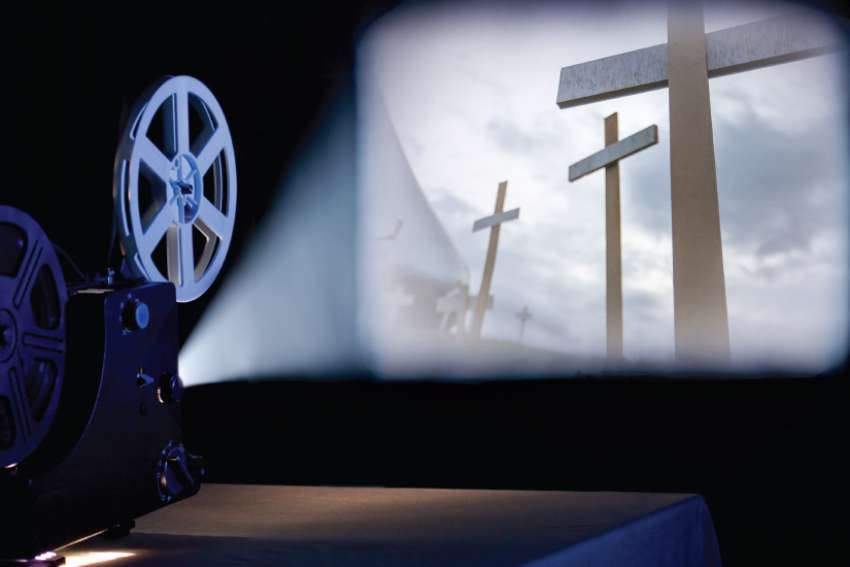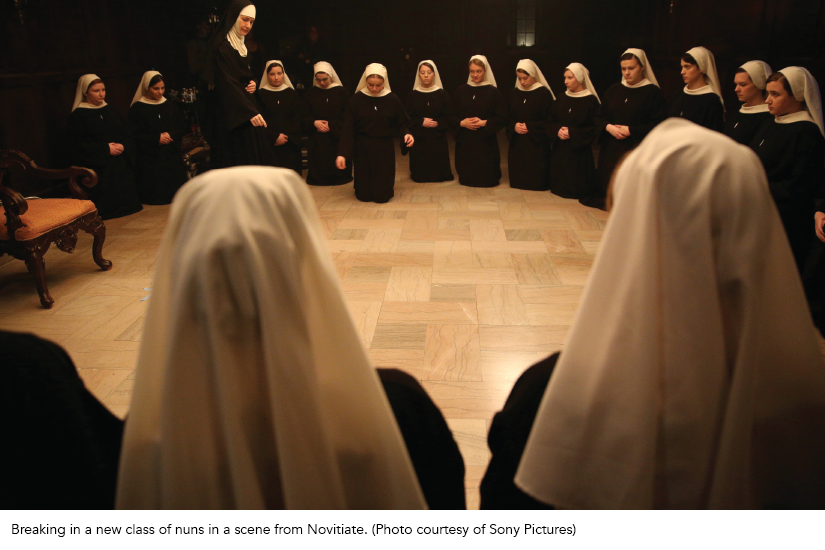It’s a question that has dogged the faithful since movie-making began in earnest more than a century ago. How well are Catholic values reflected in film, and how should Catholics judge what’s out there — not just in so-called religious films, but anything put on screen?
In the maze of traditional TV, Netflix and other streaming services, cable networks, independent and studio films, finding films suitable for Catholic sensibilities can be daunting.
It was not always that way. In the early 20th century, the Church answered these questions for Catholics through the Legion of Decency, an organization dedicated to identifying and combatting objectionable content in film.
“The pre-code films of the 1920s are very explicit,” said Sr. Helena Burns, who has a blog, Hell Burns, dedicated to reviewing the good, the bad and the ugly in modern cinema. “Hollywood had no censorship back then. There was tons of nudity and immorality.”
Hollywood’s first official censorship guide, the Hays Code, was drafted by Martin Quigley, a Catholic layman, and Fr. Daniel A. Lord, a Jesuit priest. It was passed by several studio heads in February 1930. Many of the specifications in the code came from the Legion of Decency and were a direct reflection of Catholic values.
“Catholics could make or break a film,” said Burns. “Hollywood knew that.”
The Hays Code’s influence spanned from 1930 to the mid-1960s and shaped many films, including Alfred Hitchcock’s 1946 thriller, Notorious. The code banned kissing scenes longer than three seconds. Hitchcock countered by having his characters break off every three seconds during a two-and-a-half minute long kiss sequence.
As time passed, the influence of the code (and the Church) began to lessen in Hollywood. Films became racier. Valley of the Dolls (1967) was condemned by the Legion of Decency. As was The Rocky Horror Picture Show (1975.) Yet the films still earned $44.4 million and $140 million respectively at the box office.
“The Church never changed its attitude, Hollywood just started being able to get away with more,” said Fr. Daniel Callam, author of A Catholic Goes to the Movies. “The world changed in the 1960s — it was the sexual revolution, hippies, back to nature, the saying was ‘don’t trust anyone over 30.’ ”
There is no official Catholic organization reviewing and rating films today, but there are websites, such as Burns’, and other Catholic media that review films.
“L’Osservatore Romano (the Vatican’s daily newspaper) still publishes a film section with reviews,” said Peter Howell, Toronto Star film critic. “But most Catholic institutions just don’t have the authority they used to.”
Burns traces this decline of authority to a philosophical split between Church and art during the 18th century.
“We used to be a patron of the arts. Not only were the artists Catholic — Raphael, Michelangelo — they created art out of their faith and struggles and the Church commissioned them to produce the finest art the world has ever known,” said Burns. “Pope Paul VI once said that ‘the greatest tragedy of our age is the split between faith and culture.’ ”
Burns, who teaches media literacy and Theology of the Body to Catholic youth, says the way to mend the split is to focus on the good. Instead of listing the “bad” films Catholics should avoid, she tries to list the good ones. On her blog, Burns keeps an updated list of films and Netflix TV shows she recommends. It is called “Hidden Netflix Gems” and contains some surprising recommendations, including Stranger Things, a science-fiction series, and Black Mirror, a dystopian series with dark subject matter. Her list of favourite movies runs the spectrum of emotion — from A Man for All Seasons to What About Bob?

When it comes to discerning the good films from the bad, Burns does not have a checklist. She says she uses judgment and critical thinking to find messages of love and truth in the films she watches.
 “We should be surprised when films get it wrong,” said Burns. “We’re made for truth and we’re made for love.”
“We should be surprised when films get it wrong,” said Burns. “We’re made for truth and we’re made for love.”
On Los Angeles Bishop Robert Barron’s website, Word on Fire, he also reviews popular films and shows, often drawing biblical parallels. In a review of the Netflix series The Crown, which chronicles Queen Elizabeth II’s early reigning years, Elizabeth faces many difficult decisions. One of the most wrenching for the royal is upholding her obligation to the Church of England to deny her sister Margaret’s wish to marry a divorced man, a moral example that Barron applauds.
“Elizabeth was forced to choose God’s way over her sister’s desire,” writes Barron. “For nothing can be permitted to violate the God-given moral values upon which a society is rightly constructed. God bless the makers of The Crown for helping us to see this in a most dramatic way.”
Callam says that most films he comes across have a good message.
“I don’t think human nature changes and, therefore, the old ideals of goodness rewarded and evil punished is what people want to see,” said Callam. “A lot of films get it right when it comes to virtue. Violence doesn’t really bother me because it is so stylized. It’s almost like a fairy tale.
“In the James Bond films for example, virtue triumphs in the end. I believe there’s a need to face violence. The Batman films are also highly moral. If you dig a little below the surface, I think you will find that most films are on the right side.”
Howell says it is up to the audience to think critically and decide for themselves.
“It’s not a moral rulebook but a moral rule — go in with an intelligent mind and be questioning but keep an open mind when it comes to what the filmmaker is trying to say.”
In the case of Novitiate, Howell sees past any historically questionable themes to find a captivating story.
“I saw it as an interesting story about a devout Catholic woman (Mother Superior) fighting the impulse to stay true to what she thought was her faith during a time of great social, cultural and religious change,” said Howell.
“She is conflicted. She wants to uphold the traditional Church as she knows it but her male superior, the Archbishop (Denis O’Hare) is ordering her to follow Vatican II. He basically tells her, ‘I don’t care what your views are. This is the way things are now and you have to follow the new, more liberal views.’ ... She’s completely conflicted. I found it fascinating.”
The film reminded Howell, a practising Catholic, of his days as an altar server pre-Vatican II.
“The priest used to speak in Latin with his back to the congregation,” said Howell. “As a child, I was intimidated by the Church.”
Howell, 61, was still a child when the Second Vatican Council closed in 1965. The following years saw several changes ushered in across the Church.
“It was like someone had opened all the windows in an old room and let the sun come in,” he said. “It upset a lot of people though. Vatican II is a controversial subject to make a film about in the first place.”
Burns is much more blunt in her assessment of Novitiate. It is, she writes, an “inauthentic piece of trash.”
“The trailer suggests that the film is going to explore what happened to religious life when the so-called ‘Spirit of Vatican II’ hit the fan,” Burns writes. “What transpired to garner such radical changes in the sisterhood — particularly in North America — almost overnight in the 1960s and 1970s? What caused the exodus of 33,000 U.S. women religious from their vows and congregations during these turbulent times? This film, evidently, is not actually interested in that.”
Burns also says the film inaccurately portrays life inside the convent (“Take it from an insider [moi] no, it’s not. And it wasn’t like that back in the day either.”).
For the movie-goer, the task of separating fact, fiction and morality could perhaps be helped by something the industry does not yet have — a patron saint.
Burns, a sister of the Daughters of St. Paul, would like that patron to be the founder of her order, Blessed James Alberione.
“It’s almost like the Church is waiting for a filmmaker saint,” said Burns, laughing. “It was Alberione who said, ‘Let us put down the scissors of censorship and pick up the camera ourselves.’ ”



